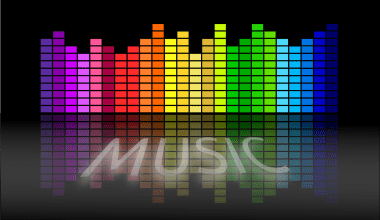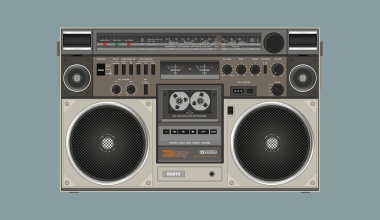Music makes life better. It cheers you up when you’re sad, helps you focus when you work, and adds fun to any celebration. But finding the right music streaming platform is not always easy. Two of the biggest platforms today are Tidal and Spotify. Each has its own strengths and caters to different types of listeners.
Are you a casual music fan who just wants to listen to their favorite songs? Or are you someone who loves high-quality sound and exclusive tracks? Let’s explore Tidal vs Spotify and find out which one suits you best.
What Are Tidal and Spotify?
Before jumping into the comparison, let’s get to know these platforms.
What is Spotify?
Spotify is one of the oldest and most popular music streaming platforms. It started in 2008 and now offers millions of songs, podcasts, and playlists. Whether you like Bollywood hits, English pop, or podcasts about life, Spotify has it all.
What is Tidal?
Tidal came later, in 2014, but quickly made a name for itself. It focuses on high-quality sound and exclusive content from big artists like Beyoncé and Jay-Z. If you care about how your music sounds or want to support your favorite artists, Tidal might grab your attention.
Pricing: What Will It Cost You?
When deciding between Tidal vs Spotify, price is an important factor. Both platforms offer free and paid plans, but there are key differences.
Spotify Plans
- Free Plan:
- Costs: ₹0
- Ads between songs
- Limited skips
- Basic sound quality (up to 160 kbps)
- Premium Plan:
- Individual: ₹119/month
- Family: ₹179/month (6 users)
- Student: ₹59/month (discounted rate)
- Features: Ad-free music, offline downloads, high sound quality (up to 320 kbps)
Tidal Plans
- HiFi Plan:
- ₹199/month
- Ad-free
- CD-quality sound
- HiFi Plus Plan:
- ₹299/month
- Studio-quality sound with Dolby Atmos
- Supports artists directly
Summary: Spotify is cheaper and great for students or families. Tidal is costlier but offers better sound quality, making it perfect for audiophiles.
How Good Is the Sound Quality?
If you’re picky about how music sounds, this is the section for you.
Spotify Sound Quality
Spotify streams music at:
- Free Plan: 160 kbps
- Premium Plan: 320 kbps
While 320 kbps is decent, it’s not “high-resolution.” Casual listeners won’t notice a difference, but music enthusiasts might find it lacking.
Tidal Sound Quality
Tidal shines in this department with:
- HiFi Plan: CD-quality (1411 kbps)
- HiFi Plus Plan: Studio-quality sound with Master Quality Authenticated (MQA) tracks
Verdict: Tidal is the winner if sound quality matters the most to you.
Music Library and Exclusive Content
Both platforms have huge music libraries, but there are some differences.
Spotify’s Library
Spotify offers over 100 million songs. It also has:
- Playlists for every mood and genre
- Popular podcasts like “The Joe Rogan Experience” and “On Purpose”
- Audiobooks (new feature)
Tidal’s Library
Tidal has 90 million tracks, but it also gives you:
- Exclusive albums and early releases from top artists
- High-quality music videos and behind-the-scenes footage
Verdict: Spotify has more songs and podcasts. But if you’re a fan of exclusive albums, Tidal takes the lead.
Which App is Easier to Use?
Spotify Interface
Spotify’s app is smooth and simple. It’s easy to create playlists, discover new songs, and play music on different devices with Spotify Connect.
Tidal Interface
Tidal’s app is stylish but can feel a little confusing at first. However, it’s great for exploring artist-focused content like curated playlists and exclusive videos.
Verdict: Spotify wins for user-friendliness.
Offline Listening and Device Support
Spotify
- Works on almost every device (smartphones, laptops, smart TVs, wearables)
- Lets you download up to 10,000 songs offline
Tidal
- Supports many devices, including high-end audio systems
- Offers unlimited offline downloads for premium users
Verdict: Both platforms offer strong offline options, but Spotify is more widely supported.
Music is better when shared, right?
Spotify’s Sharing Features
- Share playlists on Instagram, Facebook, and Snapchat
- Collaborative playlists with friends
- Real-time listening sessions
Tidal’s Sharing Features
Tidal doesn’t focus much on social sharing. It’s more about individual listening.
Verdict: Spotify is the clear winner for sharing music with friends.
Supporting Artists: How Do They Pay?
Spotify Royalties
Spotify has often been criticized for low artist payouts. While it has the largest user base, its royalty rates are among the lowest.
Tidal Royalties
Tidal pays higher royalties and even offers a fan-powered payment model with its HiFi Plus plan. This means your subscription money directly supports the artists you listen to the most.
Verdict: If you care about fair pay for artists, Tidal is the better choice.
Who Should Use Tidal?
Tidal is perfect if:
- You’re an audiophile who values high-quality sound.
- You want to support your favorite artists.
- You love exclusive content from top musicians.
Who Should Use Spotify?
Spotify is ideal if:
- You’re a casual listener looking for affordable options.
- You enjoy podcasts as much as music.
- You like sharing music and discovering new tracks with friends.
Final Thoughts
Choosing between Tidal vs Spotify depends on what you value more:
- Spotify is affordable, user-friendly, and great for casual listening.
- Tidal offers unmatched sound quality and artist-friendly features.
Both platforms bring something special to the table. Think about your priorities—whether it’s sound, price, or exclusive content—and make the choice that fits your lifestyle.
FAQs
1. Can I use Tidal and Spotify for free?
Spotify offers a free plan with ads. Tidal does not have a free plan but provides a free trial.
2. Which platform has better sound quality?
Tidal offers better sound quality with its HiFi and Master Quality tracks.
While Tidal allows playlist sharing, Spotify’s social features are much stronger.
4. Does Spotify support exclusive artist content?
No, Spotify does not offer exclusive artist albums or early releases. Tidal excels in this area.
Related Articles:
For further reading, explore these related articles:
- Local Singers: The Hidden Gems of Our Communities
- How to Find Music Online: The Easiest Guide for Everyone
For additional resources on music marketing and distribution, visit Deliver My Tune.





